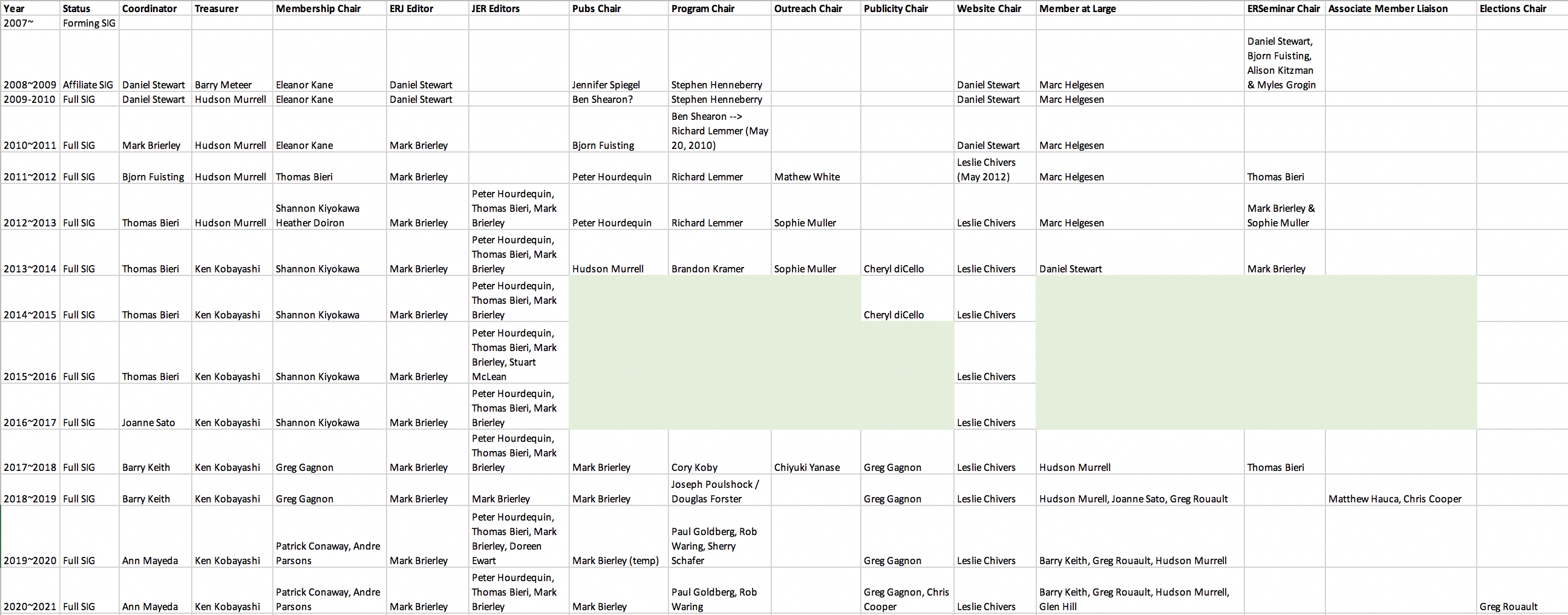The JALT ER SIG exists to help promote Extensive Reading (ER) in Japan and via our website, our newsletter, the ERJ Journal, and presentations throughout Japan we aim to help teachers set up and make the most of their ER programmes.
全国語学教育学会多読分野別研究部会「JALT ER SIG」は、講師達がERプログラムをスムーズに始められるよう、またそれを有効的に利用できることを目的に活動しています。またこの概念を元に、私達のウエブサイト、会報、ERJ雑誌、プレゼンテーションなどを通じERの促進を促しています。
Establishment of the SIG and Past List of Officers
History: The Extensive Reading Special Interest Group (ER SIG) of the Japan Association for Language Teaching (JALT) was established in 2008 by Daniel Stewart, who played a key role in developing it into one of JALT’s most active and influential SIGs. Daniel served as the coordinator of the SIG from 2008 until 2010. He was also the founding editor of the Journal of Extensive Reading in Japan (ERJ), from its first issue (Volume 1, Issue 1) in summer 2008 through Volume 4, Issue 3 in 2011. In addition to his editorial and leadership roles, Daniel created and maintained the SIG’s first website, jaltersig.org. An archived version of the original front page is still accessible here.
After Daniel, the role of coordinator was taken on by:
-
Mark Brierley
-
Bjorn Fuisting (2011 to mid-2012)
-
Thomas Bieri (mid-2012 to 2017)
Mark Brierley took over as editor of the ERJ beginning with Volume 5, Issue 1 (June 2012), and continues to serve in that role today.
In 2013, The Journal of Extensive Reading, the SIG’s peer-reviewed online publication hosted on OJS, was launched by Peter Hourdequin, together with Mark Brierley, Leslie Chivers, and Thomas Bieri. The journal published its first article that same year.
Below is a snapshot of the SIG’s formation and a list of the past officers who have contributed their time, effort, and expertise over the years. This document is a work in progress, and corrections or additional details are welcome.Below is a snapshot of the formation of the SIG and the past officers who have given of their time, effort and expertise over the years. It is a work in progress and any corrections or further details are welcome.
What is Extensive Reading (ER)?
Extensive Reading is often referred to but it is worth checking on what it actually involves. Richard Day has provided a list of key characteristics of ER (Day 2002). This is complemented by Philip Prowse (2002). Maley (2008) deals with ER comprehensively. The following is a digest of the two lists of factors or principles for successful ER
- Students read a lot and read often.
- There is a wide variety of text types and topics to choose from.
- The texts are not just interesting: they are engaging/ compelling.
- Students choose what to read.
- Reading purposes focus on: pleasure, information and general understanding.
- Reading is its own reward.
- There are no tests, no exercises, no questions and no dictionaries.
- Materials are within the language competence of the students.
- Reading is individual, and silent.
- Speed is faster, not deliberate and slow.
- The teacher explains the goals and procedures clearly, then monitors and guides the students.
- The teacher is a role model…a reader, who participates along with the students.



